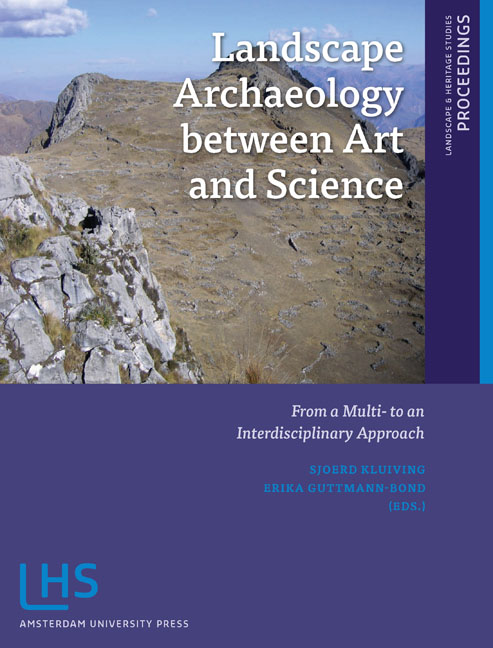Book contents
- Frontmatter
- Contents
- Preface
- Introduction: LAC2010: First International Landscape Archaeology Conference
- THEME 1 HOW DID LANDSCAPE CHANGE?
- THEME II IMPROVING TEMPORAL, CHRONOLOGICAL AND TRANSFORMATIONAL FRAMEWORKS
- THEME III LINKING LANDSCAPES OF LOWLANDS TO MOUNTAINOUS AREAS
- THEME IV APPLYING CONCEPTS OF SCALE
- THEME V NEW DIRECTIONS IN DIGITAL PROSPECTION AND MODELLING TECHNIQUES
- THEME VI HOW WILL LANDSCAPE ARCHAEOLOGY DEVELOP IN THE FUTURE?
- Miscellaneous Endmatter
Introduction: LAC2010: First International Landscape Archaeology Conference
Published online by Cambridge University Press: 21 January 2021
- Frontmatter
- Contents
- Preface
- Introduction: LAC2010: First International Landscape Archaeology Conference
- THEME 1 HOW DID LANDSCAPE CHANGE?
- THEME II IMPROVING TEMPORAL, CHRONOLOGICAL AND TRANSFORMATIONAL FRAMEWORKS
- THEME III LINKING LANDSCAPES OF LOWLANDS TO MOUNTAINOUS AREAS
- THEME IV APPLYING CONCEPTS OF SCALE
- THEME V NEW DIRECTIONS IN DIGITAL PROSPECTION AND MODELLING TECHNIQUES
- THEME VI HOW WILL LANDSCAPE ARCHAEOLOGY DEVELOP IN THE FUTURE?
- Miscellaneous Endmatter
Summary
INTRODUCTION
The study of landscape archaeology has historically drawn on two different groups of definitions of the term ‘landscape’ (Olwig 1993, 1996). On the one hand, the original, medieval meaning of landscape is ‘territory’, including the institutions that govern and manage it. Landscapes according to this definition can be observed subjectively, but also objectively by research based on fieldwork and studies in archives and laboratories (cf. Renes 2011). The second definition developed when artists painted rural scenes and called them ‘landscapes’. In the latter, not only the paintings, but also their subjects became known as landscapes. Dutch painters re-introduced the word ‘landscape’ into the English language, and the word therefore gained a more visual meaning than it had on the Continent. The visual definition turns landscape into a composition that is made within the mind of the individual, so using this definition it could be argued that there is no landscape without an observer (Renes 2011).
While in the latter definition the term ‘landscape’ originates from the Dutch ‘landschap’ (Schama 1995; David & Thomas 2008), it is probably more accurate to state that the study of ‘territorial’ landscapes originated as the study of historical geography and physical geography. This can be traced back to the classical authors, with Strabo noting that ‘geography (…) regards knowledge both of the heavens and of things on land and sea, animals, plants, fruits, and everything else to be seen in various regions’ (Strabo 1.1.1.). Physical geography is by nature an interdisciplinary field (geology, botany, soil science etc.) and in the late 18th and early 19th centuries it continued to focus on the study of the physical environment, for example in the work of the German researcher Alexander Von Humboldt. During the 19th century, most geographers saw human activities in the landscape as strongly defined by the physical landscape (such as in ‘Anthropogeographie’ in Germany: Ratzel 1882).
This approach changed in the early 20th century, when the human element was introduced. During the early 20th century in France, a new generation of geographers defined a growing role for human societies (Vidal de la Blache 1922). Carl Sauer, an American geographer, argued in 1925 that geography cannot be simply the study of the natural environment, because people have effected major changes on the landscape.
- Type
- Chapter
- Information
- Landscape Archaeology between Art and ScienceFrom a Multi- to an Interdisciplinary Approach, pp. 11 - 30Publisher: Amsterdam University PressPrint publication year: 2012
- 1
- Cited by



